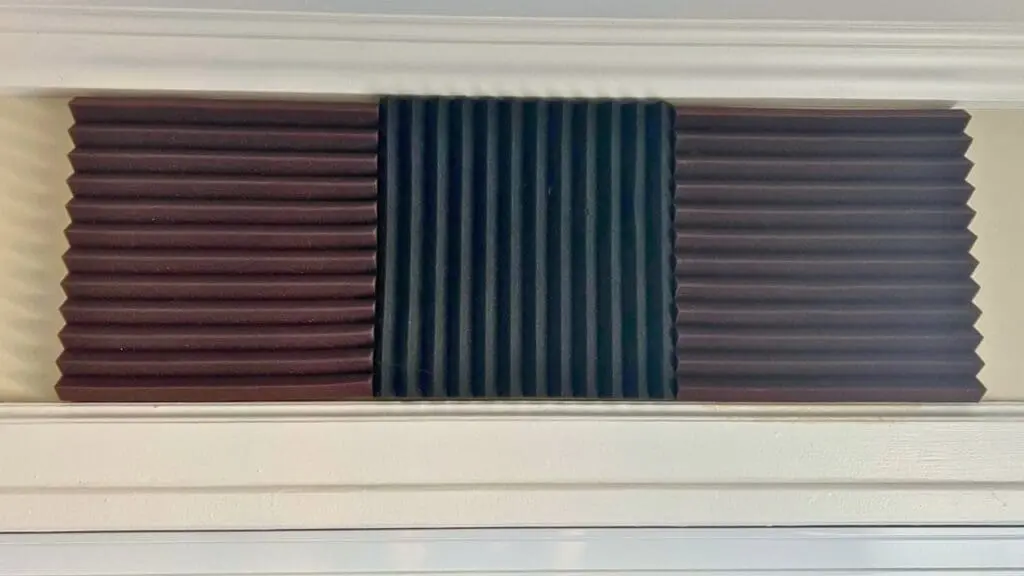Acoustic Treatment for Podcasters: How to Achieve a Better Sounding Podcast in Any Room
So, you’ve got your dynamic microphones and you’ve done a few practice runs. You listen back and notice some reflections and slap backs in your audio.
Dynamic mics are great for minimizing this, but they can’t do all the work. Your room’s acoustics also play a significant role. If your voice sounds like you’re in a cave, it’s time to invest in some acoustic treatment.
Before we get to it, just a heads up that this post contains Amazon Affiliate links. As Amazon Associates we earn from qualifying purchases.
If you make a purchase through our links we get a small commission. This is at no extra cost to you and the money we make helps us keep the blog alive.
Choosing the Right Acoustic Treatment
Acoustic treatment isn’t just about throwing some foam on the wall; it’s a calculated move. You want to target specific areas in your room to get the most bang for your buck.
The walls directly to your right and left—your “first reflection points”—are crucial. Placing acoustic panels or foam here will significantly reduce slap back. Don’t forget the wall behind you and, if you’re feeling adventurous, the ceiling above you.
When it comes to size, go for acoustic panels that are at least 2ft wide by 4ft tall or 1ft wide by 3ft tall.
Thickness matters too; aim for panels that are at least 2 inches thick. If you’re going for foam, I recommend the 2-inch thick pieces. Usually, these come in packs of 12, each piece being 1ft x 1ft.
DIY Acoustic Treatment Tips
If you’re using foam, here’s a pro tip: get some 1/2 inch thick poster board and spray glue. Cut the poster board into 2ft x 3ft or 2ft x 2ft sections and glue the foam onto it.
Trust me, gluing foam directly to your wall is a nightmare when it comes time to move. Using poster board makes it easy to rearrange or remove your acoustic treatment without damaging your walls.

Product Recommendations
For acoustic panels, I can’t recommend GIK Acoustics enough. They’re based in Atlanta, Georgia. For foam, Auralex is the way to go.
Budget-Friendly Alternatives
If you can’t invest in acoustic treatment right now, no worries. A carpeted room with furniture can also help absorb sound. Rugs and beds are excellent for dampening sound too.
In a pinch, your car or a closet can serve as a makeshift recording space.
These spaces are not ideal for long-form content but work well for short pieces or solocasts.
Measuring Acoustic Treatment Effectiveness
So you’ve set up your acoustic panels and foam, but how do you know they’re doing their job? Measuring the effectiveness of your acoustic treatment is crucial for fine-tuning your podcasting space.
First off, consider doing a “before and after” audio test. Record a short clip before installing any acoustic treatment and another one after. Compare the two to gauge the reduction in reflections and slap backs.
There are also specialized apps and software designed to analyze room acoustics. Tools like Room EQ Wizard or FuzzMeasure can provide you with detailed insights into your room’s acoustic properties.
These programs can generate frequency response graphs, waterfall plots, and other data that can be invaluable for optimizing your space.
Remember, the goal is not just to make your room sound “dead,” but to create a balanced sound environment that complements your voice and content. Continual assessment allows you to make adjustments as needed, ensuring that you’re always putting your best sound forward.
Why Investing in Acoustic Treatment Sets You Apart
Let’s get real—podcasting is a crowded space, and you’re not just competing for attention; you’re competing for loyalty. Listeners have endless options, so why should they stick with you?
One word: Quality.
While content is king, poor audio can dethrone even the most compelling narratives. That’s where acoustic treatment comes in. It’s not just a “nice-to-have”; it’s your secret weapon in a saturated market.
By putting in the time and effort to optimize your recording environment, you’re not just improving sound; you’re elevating the entire listening experience. This is how you turn casual listeners into devoted fans.
So don’t cut corners. Make the investment in acoustic treatment and set yourself—and your podcast—up for long-term success.
Connect With The Podcast Haven:
- The Podcast Haven Homepage
- Our YouTube
- TikTok
- Listen To Our Flagship Podcast CLIPPED on Apple Podcasts
- Listen To Our Flagship Podcast CLIPPED on Spotify
Read More of Our Articles To Become a Podcast Powerhouse:
- Supercast: Redefining Podcast Monetization
- Launching A Podcast: Preparation Is Key
- The Advantage of Creating Content As An Elder Millennial
Tired of Hosting a Sh*tty Podcast? Signup and Get Our Free E-Book and Weekly Podcast Tips:
